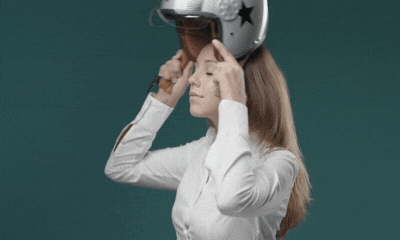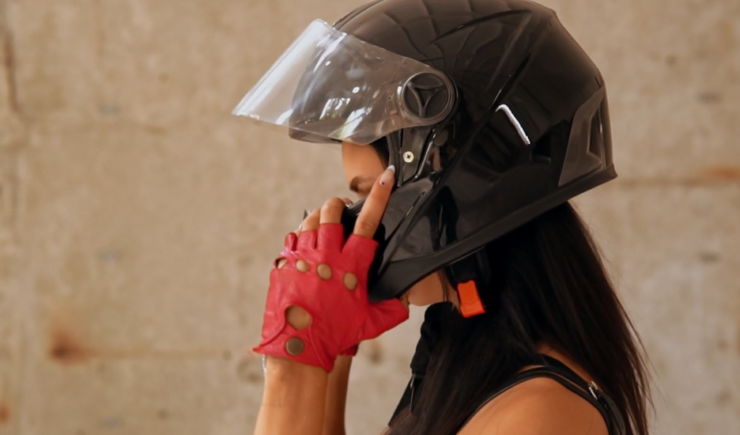A motorcycle helmet is only as effective as it is snug. A properly fitted motorcycle helmet will protect your head and face in the event of an accident, but an ill-fitting one can actually do more harm than good. In this article, we’ll show you how to find the perfect fit for your motorcycle helmet.
How to Measure for a Motorcycle Helmet?
When measuring a motorcycle helmet, it is important to use a tape measure.
- Start by measuring the circumference of your head just above your eyebrows.
- Then, measure the distance from your forehead to the back of your head.
- Lastly, measure the distance from one ear to the other.
Once you have these three measurements, you can then determine what size helmet you need.

How Tight Should It Be?
A good starting point is to make sure that the helmet is snug but not too tight. The straps should be adjusted so that they are comfortable but not too loose. Once you have the helmet on, you should be able to shake your head without the helmet moving. You should be able to fit two fingers between your chin and the strap of the helmet. The straps should also be secure, but not so tight that they’re uncomfortable.
If you find that the helmet is too loose, you can try tightening the straps or adjusting the padding. If the helmet is still too loose, you may need to buy a smaller size. On the other hand, if the helmet is too tight, you can try loosening the straps or removing some of the paddings.
Ultimately, it is important to find a balance between comfort and safety when choosing how tight your motorcycle helmet should be. You want it to be tight enough that it will stay on in the event of an accident, but not so tight that it is uncomfortable to wear for long periods of time.
If the helmet is too loose, it could come off in an accident and fail to protect your head. However, if the helmet is too tight, it could be uncomfortable and make it difficult to breathe. The best way to ensure that the helmet is tight enough is to have someone help you put it on and adjust it until it feels snug but not too tight.
How to Adjust a Motorcycle Helmet?

A helmet should fit snugly and securely on your head to provide the best protection in the event of an accident. To ensure a proper fit, follow these steps when adjusting your motorcycle helmet:
1. Place the helmet on your head. The bottom edge of the helmet should sit just above your eyebrows.
2. With the helmet straps undone, rotate the helmet until it feels level on your head.
3. Once the helmet is in place, tighten the straps until you achieve a comfortable, secure fit. The straps should not be so tight that they cause discomfort, but they should not be loose enough that the helmet can move around on your head.
4. If you have a visor on your helmet, adjust it so that it does not obstruct your vision.
5. Once you have everything adjusted, give the helmet a shake to make sure everything is secure.
Common Mistakes When Fitting a Helmet

One of the most common mistakes people make when fitting a motorcycle helmet is not making sure it’s tight enough. A loose helmet can easily come off in an accident, and even if it doesn’t, it can still provide little protection.
Another mistake is wearing the helmet too low on the head. This can obstruct your vision and make it more difficult to hear traffic around you. The helmet should be level with your eyes, or even slightly higher.
Finally, many people don’t realize that helmets need to be replaced after a certain amount of time. Even if they’ve never been in an accident, the materials degrade over time and may not provide adequate protection in the event of a crash. It’s important to check your helmet regularly and replace it every five years or so.
Quick Tips for the End
A motorcycle helmet should be tight enough to stay on in the event of a crash, but not so tight that it is uncomfortable to wear. The chin strap should be fastened so that the helmet cannot be pulled off easily, and the helmet should sit level on your head with the visor down.
When buying a motorcycle helmet, always look for the DOT certification to ensure that the helmet meets safety standards. You should also try on several different helmets before purchasing one to find one that fits well and is comfortable to wear.

